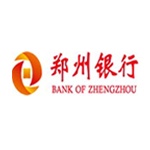ZHENGZHOU BANK(002936)
Search documents
郑州银行:首席风险官潘峰任职资格获得核准
Xin Lang Cai Jing· 2025-12-08 11:17
来源:上海证券报·中国证券网 上证报中国证券网讯(记者 马慜)12月8日,郑州银行公告称,该行于近日收到国家金融监督管理总局 河南监管局下发的《河南金融监管局关于潘峰郑州银行股份有限公司首席风险官任职资格的批复》,核 准潘峰郑州银行首席风险官的任职资格。 简历信息显示,潘峰,1971年7月出生,本科学历。潘峰于1993年7月加入郑州银行,历任总行办公室职 员、办公室副主任(主持工作)、办公室主任、董事会办公室办公室秘书、董事会办公室主任、董事会 风险管理办公室主任、新密郑银村镇银行股份有限公司董事长,现任郑州银行首席风险官、总行董事会 战略发展部总经理兼关联交易管理中心主任。截至12月8日,潘峰持有郑州银行1331股A股股份。 来源:上海证券报·中国证券网 上证报中国证券网讯(记者 马慜)12月8日,郑州银行公告称,该行于近日收到国家金融监督管理总局 河南监管局下发的《河南金融监管局关于潘峰郑州银行股份有限公司首席风险官任职资格的批复》,核 准潘峰郑州银行首席风险官的任职资格。 简历信息显示,潘峰,1971年7月出生,本科学历。潘峰于1993年7月加入郑州银行,历任总行办公室职 员、办公室副主任(主持工作)、 ...
郑州银行:潘峰获批担任首席风险官
Xin Lang Cai Jing· 2025-12-08 09:46
来源:金融一线 12月8日金融一线消息,郑州银行今日发布公告称,该行于近日收到国家金融监督管理总局河南监管局 下发的《河南金融监管局关于潘峰郑州银行股份有限公司首席风险官任职资格的批复》(豫金复 〔2025〕305 号),核准潘峰郑州银行首席风险官的任职资格。 简历显示,潘峰,1971年7月出生,本科学历。于1993年7月加入郑州银行,历任总行办公室职员、办公 室副主任(主持工作)、办公室主任、董事会办公室办公室秘书、董事会办公室主任、董事会风险管理 办公室主任、新密郑银村镇银行股份有限公司董事长,现任该行首席风险官、总行董事会战略发展部总 经理兼关联交易管理中心主任。 ...
城商行板块12月8日跌0.31%,上海银行领跌,主力资金净流入1.29亿元
Zheng Xing Xing Ye Ri Bao· 2025-12-08 09:09
Group 1 - The city commercial bank sector experienced a decline of 0.31% on December 8, with Shanghai Bank leading the drop [1] - The Shanghai Composite Index closed at 3924.08, up 0.54%, while the Shenzhen Component Index closed at 13329.99, up 1.39% [1] - Key individual stock performances in the city commercial bank sector included Xiamen Bank rising by 3.32% and Shanghai Bank falling by 1.43% [1][2] Group 2 - The net inflow of main funds into the city commercial bank sector was 129 million yuan, while retail investors saw a net outflow of 156 million yuan [2] - The table of fund flows indicated that Jiangsu Bank had a net outflow of 56.86 million yuan from main funds, while Hangzhou Bank had a net inflow of 49.79 million yuan [3] - The overall trend showed that retail investors were withdrawing funds from several banks, with notable outflows from Suzhou Bank and Qingdao Bank [3]
郑州银行(002936) - 郑州银行股份有限公司关于高级管理人员任职资格获核准的公告

2025-12-08 09:00
潘峰先生的简历详见附件。 特此公告。 郑州银行股份有限公司董事会 2025 年 12 月 9 日 附件 潘峰先生简历 证券代码:002936 证券简称:郑州银行 公告编号:2025-047 郑州银行股份有限公司 关于高级管理人员任职资格获核准的公告 郑州银行股份有限公司(以下简称"本行")及董事会全体成员保证公告内容的真实、准 确、完整,没有虚假记载、误导性陈述或重大遗漏。 本行于近日收到国家金融监督管理总局河南监管局下发的《河南金融监管局 关于潘峰郑州银行股份有限公司首席风险官任职资格的批复》(豫金复〔2025〕 305 号),核准潘峰先生本行首席风险官的任职资格。 潘峰先生,1971 年 7 月出生,本科学历。 截至本公告日,潘先生持有本行 1,331 股 A 股股份,不存在《公司法》、本 行《公司章程》以及中国证监会、证券交易所规定的不得聘任为高级管理人员的 情形,与本行持股 5%以上股份的股东及其他董事、高级管理人员不存在关联关 系,未受过中国证监会及其他有关部门的处罚和证券交易所纪律处分,未因涉嫌 犯罪被司法机关立案侦查或者涉嫌违法违规被中国证监会立案稽查,未曾被中国 证监会在证券期货市场违法失信信 ...
河南金融监管局核准林铁军郑州银行商丘分行行长任职资格
Jin Tou Wang· 2025-12-07 23:02
2025年12月3日,河南金融监管局发布批复称,《郑州银行(002936)股份有限公司关于核准林铁军商 丘分行行长任职资格的请示》(郑银文〔2025〕175号)收悉。经审核,现批复如下: 一、核准林铁军郑州银行商丘分行行长的任职资格。 二、郑州银行应要求上述核准任职资格人员严格遵守金融监管总局有关监管规定,自郑州银行政许可决 定作出之日起3个月内到任,并按要求及时报告到任情况。未在上述规定期限内到任的,本批复文件失 效,由河南金融监管局办理行政许可注销手续。 三、郑州银行应督促上述核准任职资格人员持续学习和掌握经济金融相关法律法规,牢固树立风险合规 意识,熟悉任职岗位职责,忠实勤勉履职。 ...
郑州银行首席风险官潘峰任职资格获批
Bei Jing Shang Bao· 2025-12-05 08:01
北京商报讯(记者 孟凡霞 周义力)12月5日,河南金融监管局发布《关于潘峰郑州银行首席风险官任职 资格的批复》,核准潘峰郑州银行首席风险官的任职资格。 ...
潘峰获批出任郑州银行首席风险官
Xin Lang Cai Jing· 2025-12-05 05:10
12月5日金融一线消息,河南金融监管局发布批复,核准潘峰郑州银行股份有限公司首席风险官的任职 资格。 责任编辑:秦艺 责任编辑:秦艺 12月5日金融一线消息,河南金融监管局发布批复,核准潘峰郑州银行股份有限公司首席风险官的任职 资格。 ...
郑州银行首席风险官潘峰任职资格获核准
Cai Jing Wang· 2025-12-05 04:16
12月5日,国家金融监督管理总局河南监管局发布批复,核准潘峰郑州银行(002936)股份有限公司首席风险官的任职资格。 批复要求,郑州银行应要求上述核准任职资格人员严格遵守金融监管总局有关监管规定,自本行政许可决定作出之日起3个月内到任,并按要求及时报告到 任情况。未在上述规定期限内到任的,本批复文件失效,由该局办理行政许可注销手续。 同时,郑州银行应督促上述核准任职资格人员持续学习和掌握经济金融相关法律法规,牢固树立风险合规意识,熟悉任职岗位职责,忠实勤勉履职。 (国家金融监督管理总局) ...
郑州银行(002936) - H股公告 - 截至二零二五年十一月三十日止月份之股份发行人的证券变动月报表

2025-12-03 10:15
股份發行人及根據《上市規則》第十九B章上市的香港預託證券發行人的證券變動月報表 截至月份: 2025年11月30日 狀態: 新提交 致:香港交易及結算所有限公司 公司名稱: 鄭州銀行股份有限公司 (於中華人民共和國註冊成立的股份有限公司) 呈交日期: 2025年12月3日 I. 法定/註冊股本變動 | 1. 股份分類 | 普通股 | 股份類別 | H | | 於香港聯交所上市 (註1) | | 是 | | | --- | --- | --- | --- | --- | --- | --- | --- | --- | | 證券代號 (如上市) | 06196 | 說明 | H股 | | | | | | | | | 法定/註冊股份數目 | | | 面值 | | 法定/註冊股本 | | | 上月底結存 | | | 2,020,458,000 | RMB | | 1 RMB | | 2,020,458,000 | | 增加 / 減少 (-) | | | 0 | | | RMB | | 0 | | 本月底結存 | | | 2,020,458,000 | RMB | | 1 RMB | | 2,020,458,000 | ...
郑州银行(06196) - 截至二零二五年十一月三十日止月份之股份发行人的证券变动月报表

2025-12-03 08:31
股份發行人及根據《上市規則》第十九B章上市的香港預託證券發行人的證券變動月報表 截至月份: 2025年11月30日 狀態: 新提交 致:香港交易及結算所有限公司 公司名稱: 鄭州銀行股份有限公司 (於中華人民共和國註冊成立的股份有限公司) 呈交日期: 2025年12月3日 I. 法定/註冊股本變動 | 1. 股份分類 | 普通股 | 股份類別 | H | | 於香港聯交所上市 (註1) | | 是 | | | --- | --- | --- | --- | --- | --- | --- | --- | --- | | 證券代號 (如上市) | 06196 | 說明 | H股 | | | | | | | | | 法定/註冊股份數目 | | | 面值 | | 法定/註冊股本 | | | 上月底結存 | | | 2,020,458,000 | RMB | | 1 RMB | | 2,020,458,000 | | 增加 / 減少 (-) | | | 0 | | | RMB | | 0 | | 本月底結存 | | | 2,020,458,000 | RMB | | 1 RMB | | 2,020,458,000 | ...



